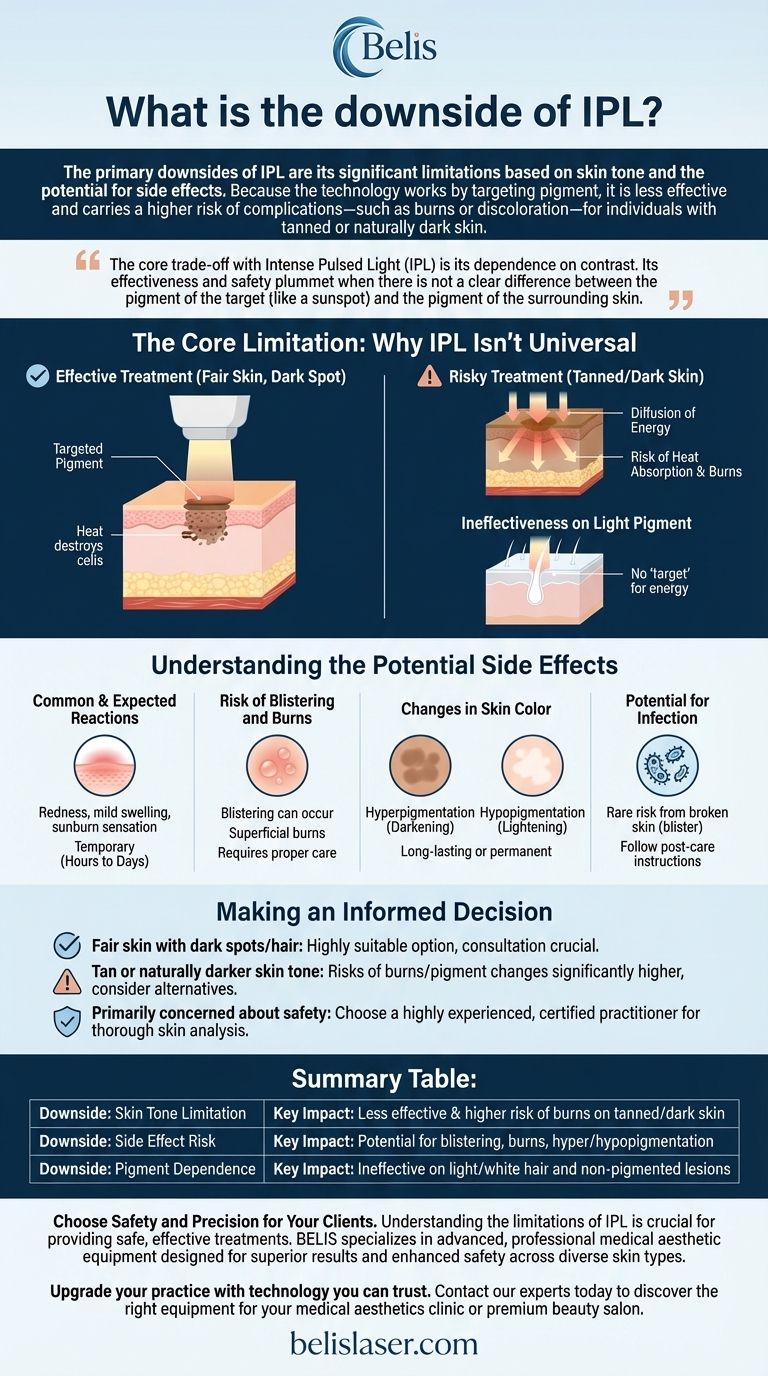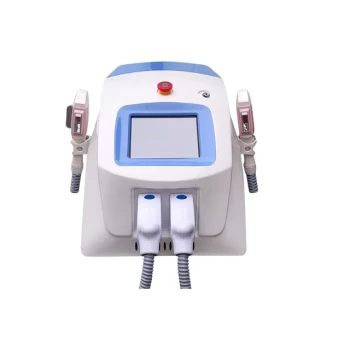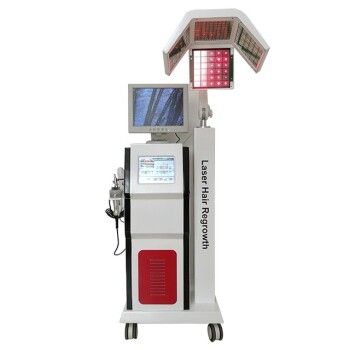The primary downsides of IPL are its significant limitations based on skin tone and the potential for side effects. Because the technology works by targeting pigment, it is less effective and carries a higher risk of complications—such as burns or discoloration—for individuals with tanned or naturally dark skin.
The core trade-off with Intense Pulsed Light (IPL) is its dependence on contrast. Its effectiveness and safety plummet when there is not a clear difference between the pigment of the target (like a sunspot) and the pigment of the surrounding skin.

The Core Limitation: Why IPL Isn't Universal
To understand the downsides of IPL, you must first understand how it works. The device emits a broad spectrum of light that is absorbed by pigment (melanin) in your skin or hair.
How It Targets Pigment
The light energy converts to heat, which then destroys the targeted cells responsible for the discoloration or hair growth. This process is most effective when the target is dark and the surrounding skin is light.
The Problem with Darker Skin Tones
For individuals with tanned or darker skin, the IPL device can struggle to differentiate between the melanin in a sunspot and the natural melanin in the skin itself. This diffusion of energy reduces effectiveness and, more importantly, increases the risk that the surrounding skin will absorb too much heat, leading to burns or other side effects.
Ineffectiveness on Light Pigment
Conversely, IPL is generally ineffective for treating very light or white hair, or certain non-pigmented lesions. Without enough melanin to absorb the light, there is no "target" for the energy to heat up and destroy.
Understanding the Potential Side Effects
While many treatments proceed without issue, it's critical to be aware of the potential negative outcomes, which range from temporary and mild to more significant complications.
Common and Expected Reactions
It is normal to experience some redness, mild swelling, and a sensation similar to a sunburn immediately following the procedure. These effects are typically temporary and resolve within a few hours to a couple of days.
Risk of Blistering and Burns
In some cases, especially if the machine's setting is too high for your skin type or the treatment is administered incorrectly, blistering can occur. These are superficial burns that require proper care to prevent scarring.
Changes in Skin Color
One of the more serious potential side effects is a change in skin color. This can manifest as hyperpigmentation (darkening of the skin) or hypopigmentation (lightening of the skin) in the treated area. These changes can be long-lasting or even permanent.
Potential for Infection
Though rare, any break in the skin, such as from a blister, creates a risk of bacterial infection. Following post-treatment care instructions from your provider is essential to prevent this.
Making an Informed Decision
Understanding the risks allows you to weigh them against the potential benefits for your specific situation.
- If you have fair skin with dark spots or hair: IPL is often a highly suitable option, but a consultation with a certified professional is crucial to confirm your candidacy.
- If you have a tan or a naturally darker skin tone: The risks of burns and pigment changes are significantly higher, and you should seriously consider alternative treatments designed for your skin type.
- If you are primarily concerned about safety: Your most important step is choosing a highly experienced, certified practitioner who performs a thorough skin analysis before treatment.
Ultimately, recognizing the limitations of IPL is the key to using it safely and achieving the results you desire.
Summary Table:
| Downside | Key Impact |
|---|---|
| Skin Tone Limitation | Less effective & higher risk of burns on tanned/dark skin |
| Side Effect Risk | Potential for blistering, burns, hyper/hypopigmentation |
| Pigment Dependence | Ineffective on light/white hair and non-pigmented lesions |
Choose Safety and Precision for Your Clients
Understanding the limitations of IPL is crucial for providing safe, effective treatments. BELIS specializes in advanced, professional medical aesthetic equipment designed for superior results and enhanced safety across diverse skin types.
Upgrade your practice with technology you can trust. Contact our experts today to discover the right equipment for your medical aesthetics clinic or premium beauty salon.
Visual Guide

Related Products
- Clinic Use IPL and SHR Hair Removal Machine with Nd Yag Laser Tattoo Removal
- IPL SHR Hair Removal Machine for Permanent Hair Removal
- IPL SHR+Radio frecuency machine
- Multifunctional Laser Hair Growth Machine Device for Hair Growth
- Diode Tri Laser Hair Removal Machine for Clinic Use
People Also Ask
- What is intense pulsed light good for? A Versatile Solution for Sun Spots, Redness, and Hair
- What are the negative effects of IPL? Understanding Risks for Safe Treatment
- Can you use a hair removal device on private parts? A Safe Zone Guide for Intimate Areas
- Does IPL work on all hair types? The Truth About Melanin & Hair Removal Success
- Are IPL machines safe? Understanding Skin Tone Compatibility for Safe At-Home Use



















